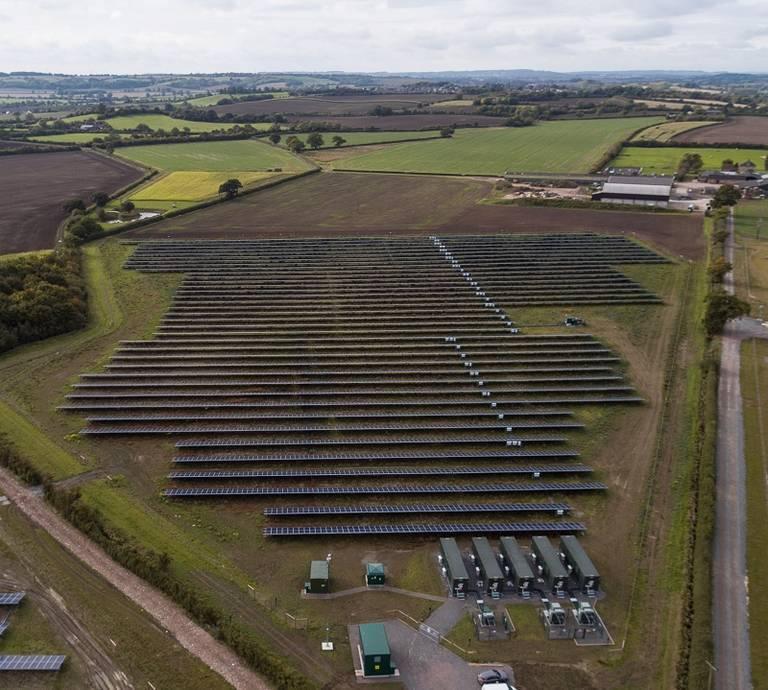
This week, the United Kingdom launched a new solar plant outside the town of Flitwick, about an hour's drive north of London. But unlike some of the UK's largest solar installations, the Clayhill Solar Farm was planned and built without any government subsidies or incentive such as feed-in tariffs.
Furthermore, a 6MW battery battery storage unit will complement the 10MW solar plant in the county of Bedfordshire. The installation marks another step forward in the UK's clean energy future as the current government has made it clear it wants such projects to continue without any subsidies.
The Chinese battery manufacturer BYD will supply the battery units as well as the solar panels. Huawei will provide 1,500-volt inverters that the company claims are a "breakthrough" for the global solar sector. About 31,000 solar panels in total are spread across 45 acres.
The United Nation's climate action program has hailed Clayhill as "tipping point for the industry," due to the fact it is financed entirely by private investors.
Not so fast, say some observers. The Financial Times noted that Clayhill was built next to a large solar plant already in operation, allowing for the new installation to benefit from grid connections and other equipment already in place. So even though renewables continue to plummet in price worldwide, the costs involved with linking them to the grid suggest some financial incentives will still be necessary in the near future. "In a nutshell: find a site where you can lean on existing infrastructure," summed up MIT Technology Review.
Nevertheless, Clayhill proves that renewables still have a potent future. Steve Shine, CEO of Anesco, the clean energy developer leading the project, told PV Magazine that the budgeting of the project required a close examination of everything during the planning and construction phases. The overall design, technical specifications and the entire supply chain underwent a rigorous assessment as subsides of any kind were out of the picture. "By deciding to co-locate the 6 MW battery storage unit and by working closely with our supply chain partners, we have been able to achieve a subsidy-free development," he explained to reporter Ian Clover in an interview.
The addition of Clayhill to the UK's energy portfolio comes on the heels of the country's national utility's description of summer 2017, a conclusion that it was the "greenest ever." National Grid estimated that between late June and last week, the carbon intensity of the UK's grid (as in grams of carbon emitted for each kilowatt-hour of power generated), was reduced to half its level four years ago. Low carbon sources contributed 52 percent of the carbon's generation, compared to 35 percent in 2013. Projects such as Clayhill, in addition to cheaper offshore wind power, will boost renewables' share of the UK's power generation even more in the coming years.
Image credit: Anesco

Leon Kaye has written for 3p since 2010 and become executive editor in 2018. His previous work includes writing for the Guardian as well as other online and print publications. In addition, he's worked in sales executive roles within technology and financial research companies, as well as for a public relations firm, for which he consulted with one of the globe’s leading sustainability initiatives. Currently living in Central California, he’s traveled to 70-plus countries and has lived and worked in South Korea, the United Arab Emirates and Uruguay.
Leon’s an alum of Fresno State, the University of Maryland, Baltimore County and the University of Southern California's Marshall Business School. He enjoys traveling abroad as well as exploring California’s Central Coast and the Sierra Nevadas.














